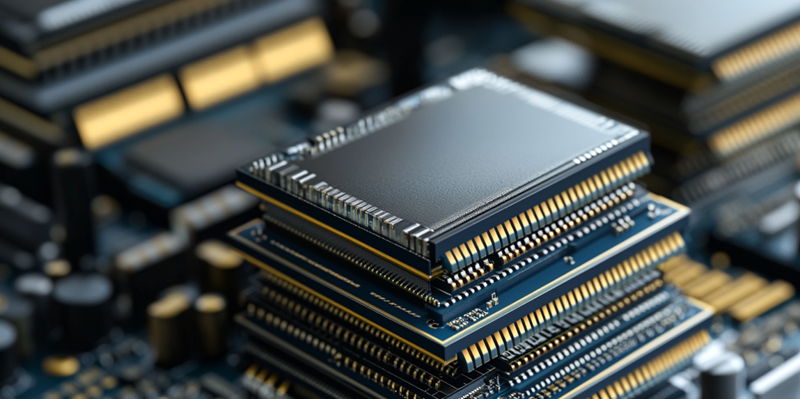In a bold move that could potentially upend the CPU market, AMD has filed a patent for a pioneering "multi-chip stacking" technique for future Ryzen SoCs. The patent details an innovative approach where smaller chiplets are strategically placed under a larger die within a single package. This method, known as "chip stacking," is expected to substantially enhance die scalability and performance. By overlapping chiplets, AMD can expand chip design capabilities, allowing additional functions on a single die while optimizing the contact area. This advancement can pave the way for higher core counts, larger caches, and significantly improved memory bandwidth, all within the same die size.
A major benefit of this "multi-chip stacking" method is the reduction of interconnect latency between components. Reduced latency is achieved by shrinking the distance between the various chiplets through overlapping, promoting quicker communication paths. Additionally, this design facilitates effective power gating, as the separated chiplets provide better control over individual units, leading to enhanced energy efficiency. This method exemplifies AMD’s forward-thinking approach, which could set a new benchmark in CPU performance and energy management.
AMD’s new approach continues their tradition of pioneering "multi-chiplet" designs, a strategy they have employed successfully in their processors and GPUs. Moving away from single monolithic designs to multi-chip configurations aligns with AMD’s innovative ethos and competitive tactics against rivals like Intel. The "multi-chip stacking" method underscores AMD’s commitment to pushing the boundaries of performance and efficiency within their consumer CPU lineup. Through continued innovation in multi-chiplet designs, AMD demonstrates its potential to lead the CPU market with superior implementation and performance, highlighting their adaptive strategies in a rapidly evolving industry.
In conclusion, AMD’s exploration of "multi-chip stacking" could mark a significant leap forward in CPU design, promising remarkable improvements in performance and efficiency. This innovative approach showcases AMD’s dedication to staying at the cutting edge of semiconductor technology. If successful, it could revolutionize the industry, affirming AMD’s role as an innovator and leader within a competitive landscape.

